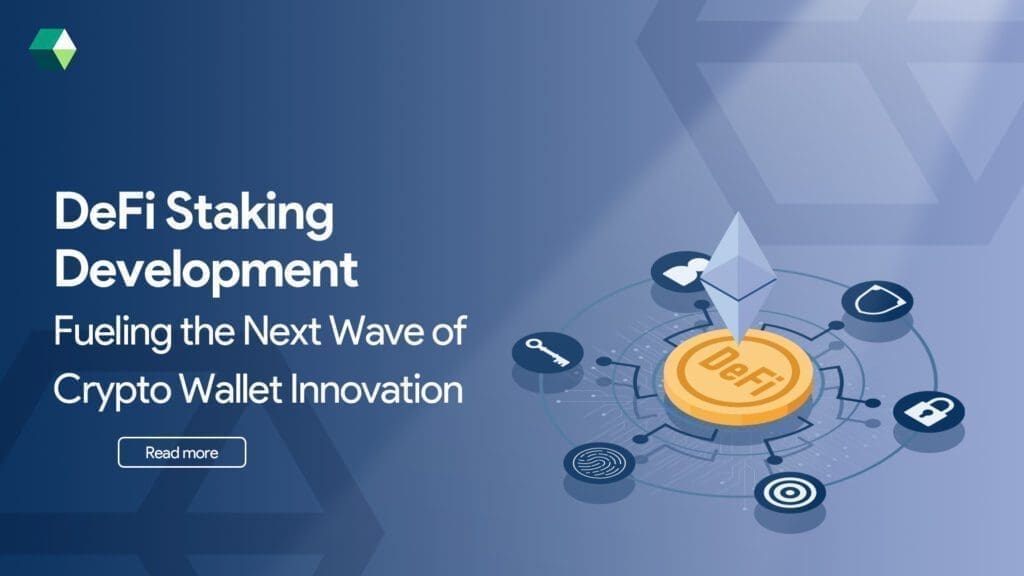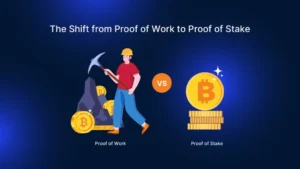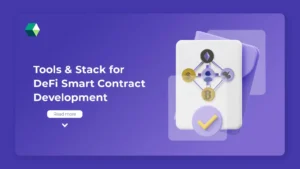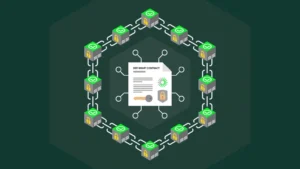
As the cryptocurrency world continues to evolve, wallets have transformed from simple storage solutions to complex financial hubs. These wallets now serve as gateways for users to participate in the decentralized finance (DeFi) ecosystem, manage their portfolios, and even earn passive income through various blockchain services like staking. The shift from merely holding assets to actively engaging in DeFi activities is reshaping how wallets operate and how users interact with their digital assets.
In 2025, the expectations surrounding crypto wallets are dramatically different. Gone are the days when users were content with basic wallets that merely stored their digital assets. The modern crypto holder seeks not only a secure vault for their assets but also a powerful platform that enables them to grow their wealth, take part in DeFi activities, and manage their portfolios with ease. This shift is driving the rapid expansion of blockchain networks, multi-chain ecosystems, and decentralized finance, all of which require crypto wallets to evolve quickly in order to meet the rising demand.
What is DeFi Staking?
DeFi staking refers to the process of locking up digital assets in decentralized protocols to earn rewards. Users who stake their crypto assets contribute to the security and operation of blockchain networks and, in return, receive rewards such as new tokens or a portion of transaction fees. In simple terms, staking allows crypto holders to earn passive income by participating in the blockchain ecosystem without needing to trade or actively manage their assets.
Why Staking Has Become a Must-Have Feature in Crypto Wallets
A few years ago, staking was seen as a nice extra feature in crypto wallets. Some wallets offered it as a bonus, while others didn’t bother with it at all. But today, things have changed. Staking has become an essential feature. It’s not enough for a crypto wallet to just store your assets; users now expect their wallets to help them actively grow their investments, and staking is key to that.
DeFi staking development has become a game-changer in meeting this demand. Staking lets users lock up their tokens and earn rewards, usually through transaction fees or new tokens from the network. With staking, users can earn passive income, help keep the network running smoothly, and even have a say in how the network is governed. This involvement turns users from passive investors into active participants in the blockchain space.
If a wallet doesn’t offer easy, secure, and rewarding staking options, it risks falling behind. The competition isn’t just about how secure or user-friendly the wallet is anymore. It’s about which wallet lets users get the most value from their assets without needing to move them to other platforms. Staking is no longer a luxury feature—it’s a must-have for any next-gen wallet.
DeFi Staking: What’s Fueling the New Wave of Wallet Features
In simple terms, DeFi staking is when users lock up their crypto assets in a decentralized network to earn rewards. Instead of letting their tokens just sit in a wallet, they can use them to help secure networks, validate transactions, or provide liquidity. This lets them earn passive income while also supporting the health and security of the ecosystem — and they don’t need banks or centralized exchanges to do it. Plus, with DeFi staking, users always keep full control of their assets.
The DeFi staking market is growing quickly, and it’s expected to reach $351.75 billion by 2031, growing at a rate of nearly 49% per year. This shows that staking is not just a passing fad; it’s becoming a key part of the crypto world. Wallets that add staking features now are putting themselves in a great position for this rapid growth and making sure they stay relevant in the ever-changing crypto market. To make this happen, many are turning to DeFi staking platform development services to create secure and user-friendly platforms for staking.
Why Traditional Wallets Are No Longer Enough in 2025
The traditional approach to crypto wallets — simply holding assets and waiting for price appreciation — no longer satisfies the demands of today’s crypto users. In 2025, users expect more from their wallets. They want:
- Earning Potential: Passive income streams through staking rewards.
- Accessibility: The ability to stake assets across multiple chains with ease.
- Portfolio Control: Real-time management of staked assets, with the ability to unstake and make changes as needed.
- Reduced Risk: Safer, more secure staking options embedded within the wallet.
If wallets can’t provide these features, users will quickly turn to alternatives that offer more financial utility. In a crowded market, the traditional wallet — which simply offers storage and basic security — is being phased out in favor of next-gen wallets that help users maximize their digital assets’ potential.
How Crypto Wallets Are Evolving to Offer More Than Just Security
-
Passive Income Demand
One of the most significant drivers of wallet innovation in 2025 is the growing demand for passive income. Users are no longer content with just holding their tokens and hoping for price appreciation. They want to earn rewards on their holdings, and DeFi staking provides a way to do just that. By integrating staking into wallets, developers meet this demand while also encouraging users to keep their assets within the wallet ecosystem. The ability to earn passive income directly from a wallet strengthens user engagement and ensures users remain loyal to the platform.
-
Multi-Chain Capabilities
Another key trend in 2025 is the increasing demand for multi-chain support. Crypto investors no longer limit themselves to a single blockchain. They spread their assets across multiple networks, including Ethereum, Solana, Avalanche, and more. To stay competitive, wallets must offer cross-chain staking capabilities, allowing users to stake their assets from different blockchains without needing to juggle multiple wallets or platforms. This seamless experience is no longer a luxury — it’s a requirement.
-
Financial Utility as the New Battleground
While security will always be a top priority, the wallets of 2025 must also excel in financial utility. Security is a basic expectation, but users now look for more. They want wallets that provide them with easy access to features like staking, yield farming, liquidity provision, and even governance participation. These capabilities enable users to earn rewards, manage risk, and diversify their portfolios without ever leaving the wallet interface. Wallets that can offer these features are the ones that will lead the next wave of crypto adoption.
Key Technologies Behind DeFi Staking Integration
To successfully integrate DeFi staking, modern wallets rely on several advanced technologies:
-
Smart Contract Frameworks
Smart contracts are the backbone of staking on blockchain networks. Wallets use frameworks like Solidity for Ethereum-based chains and Rust for chains like Solana and Polkadot. These frameworks ensure that wallets can interact with multiple blockchain networks seamlessly, offering staking options across various ecosystems.
-
Layer 2 Scaling
High gas fees have long been a barrier to widespread adoption of staking. Layer 2 solutions like Optimism, Arbitrum, and zkSync help reduce transaction costs, making staking more accessible to a broader range of users, including those with smaller portfolios.
-
AI-Powered Staking Strategies
Artificial intelligence is becoming an essential tool for optimizing staking strategies. Some wallets use AI to analyze market conditions and recommend the best staking options based on a user’s risk tolerance and goals. This level of personalization ensures users are always staking in the most effective way possible.
-
Cross-Chain Compatibility
As users diversify their holdings across multiple chains, wallets must support staking across these chains. Cross-chain compatibility is crucial for enabling a seamless staking experience for users who want to stake assets on Ethereum, Solana, Polkadot, and more.
-
Enhanced Security Protocols
Wallets that integrate Multi-Party Computation (MPC) for key management ensure that private keys are stored securely, reducing the risk of hacks. Social recovery adds an extra layer of protection, allowing users to regain access to their wallets in case of a lost key.
-
DeFi SDKs & APIs
Specialized DeFi SDKs and APIs enable developers to quickly integrate staking functionalities into wallets without building everything from scratch. This reduces development time and allows wallets to offer staking features faster.
The Future of Wallets Lies in DeFi Staking
The future of crypto wallets is going to be all about DeFi staking. Wallets will let users manage their entire portfolio, earn passive income, and even take part in governance, all from one place. As the DeFi world grows and blockchain networks become more connected, wallets that offer staking will become central to the crypto ecosystem.
Wallets that make staking easy, secure, and user-friendly will not only keep their current users happy but will also attract new users who want to grow their digital assets. For developers, this means the chance to build wallets that do more than just store crypto — they will be key platforms for interacting with the entire decentralized economy.
Looking ahead to 2025 and beyond, wallets won’t just be places to store digital assets; they’ll be powerful financial tools that help users grow their wealth and connect with a variety of DeFi services. If wallets don’t include DeFi staking, they risk falling behind in a competitive market. This is where DeFi staking platform developm ent companies come in, helping create the next generation of wallets that can keep up with these changes.
ent companies come in, helping create the next generation of wallets that can keep up with these changes.
Don’t Miss Out, Try DeFi Staking!
Staking is more than just a way to earn—it’s a key part of the DeFi movement. With the help of wallets, staking becomes easier, safer, and more rewarding. A smart wallet lets users manage, earn, and decide—all in one place. The power of a smart, staking-enabled wallet lies in its ability to combine ease-of-use with powerful features. With the help of the right DeFi Staking Platform, crypto becomes more accessible for everyone.
From the simplest beginner to the most active DeFi user, staking and wallets together are shaping a new digital economy. Working with a DeFi staking platform development team can help bring these visions to life and set the stage for the next generation of user-friendly, reward-generating wallets.







